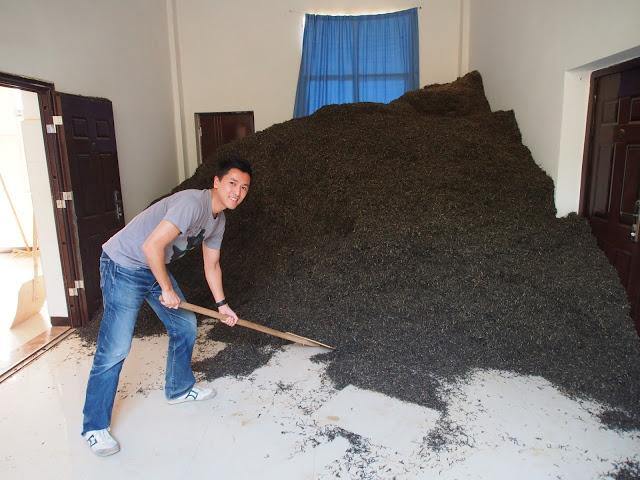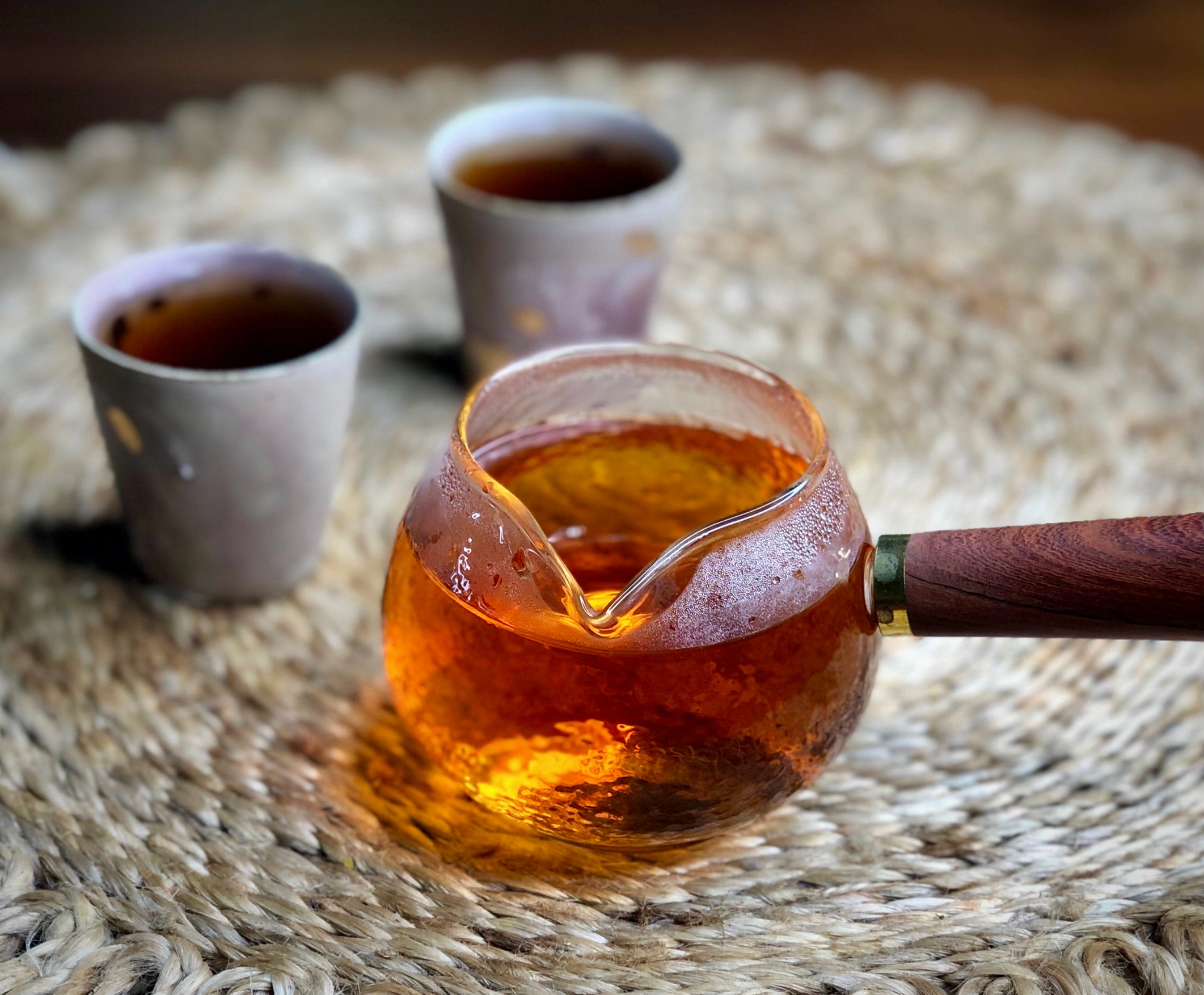
A mountain of puer tea (not ours!)
Have you ever dreamt of having an absurd amount of maocha in your living room? I know I have. This wonderful room is the beginning of a process in which raw maocha is blended, then weighed, steamed, pressed, dried and finally packaged into the bingcha we know and love.
If you want to see the earlier steps of how the freshly picked leaves are produced into maocha, visit this earlier post on how puer is processed differently from other teas.
Maocha tends to be purchased in 10-15kg bags. For producers producing a tonne or two of xiaoshu cakes, the first step is to form a heap of blended maocha. This maocha is shovelled into cardboard boxes which are carried to 1 of 2 steaming rooms, and dumped into a smaller pile on the weighing table. Here the first technician (woman in the background) weighs out the tea into steamer tins with a perforated bottom, and places a neifei at the top, followed by a few more leaves to keep it in place. Each tin is then placed on top of the steamer. The steam rises through the perforations in the base of the tin, and the moistened tea leaves immediately begin to sink. Once sufficiently damp, the second technician (man in the foreground) pulls a cloth bag over top of the tin, and with a quick flip dumps the tea leaves out into the bag. The technician then uses his hands to compress the tea leaves inside the bag into a cake shape, before twirling and tucking the loose end into a knot at the center.







To see puer production on a more intimate, smaller scale, check out this earlier post where we press cakes in Da Mengsong with Chong Kyongwon.

